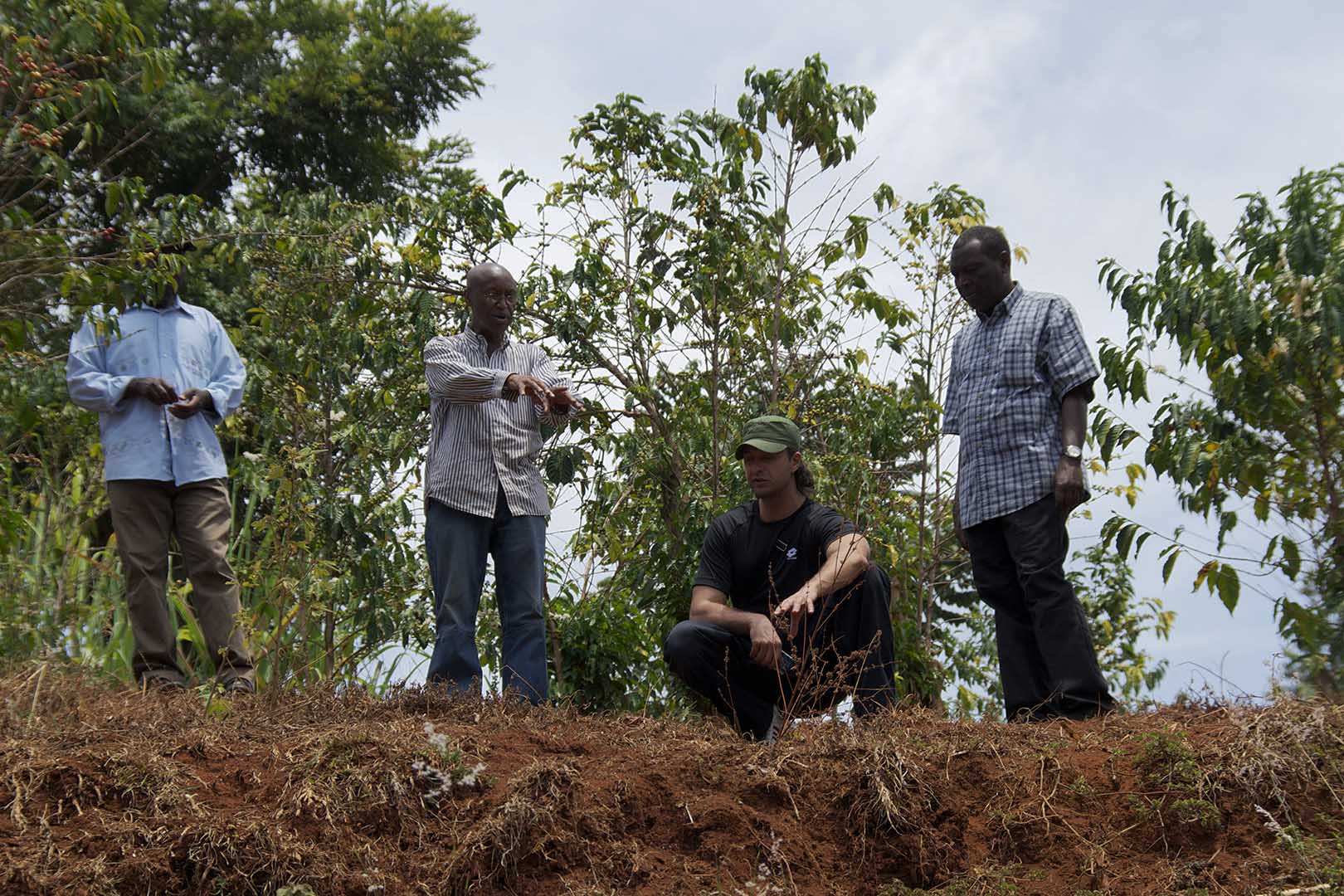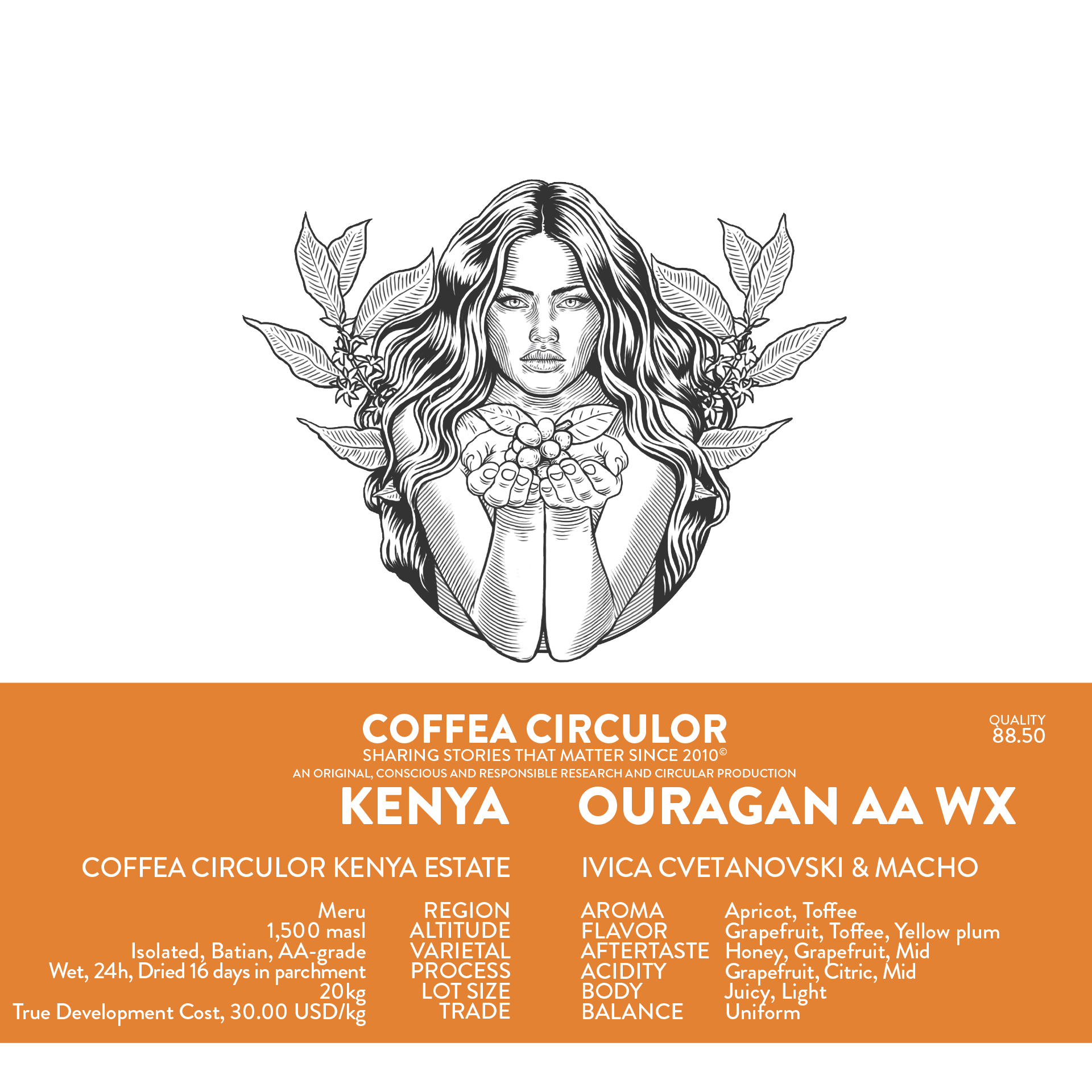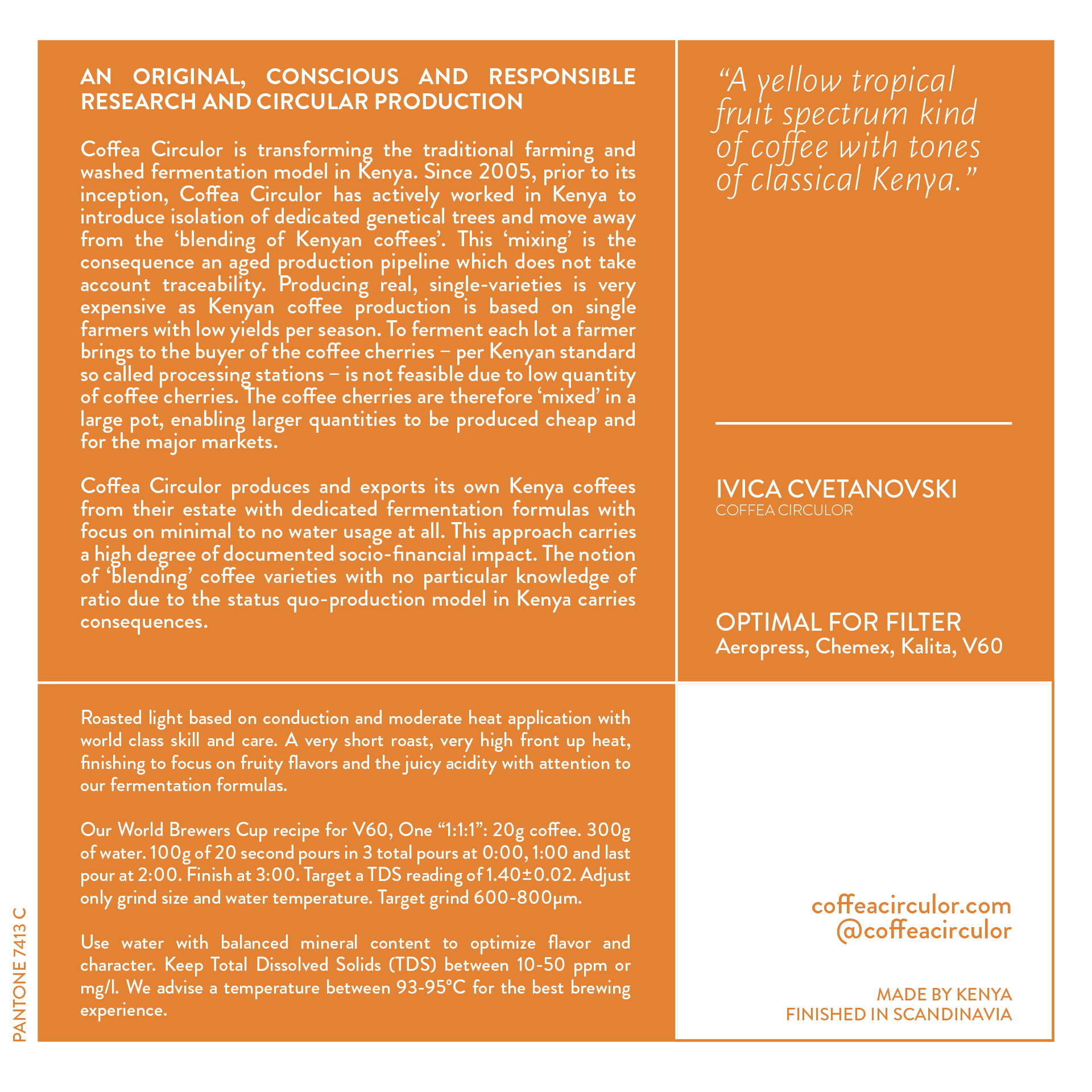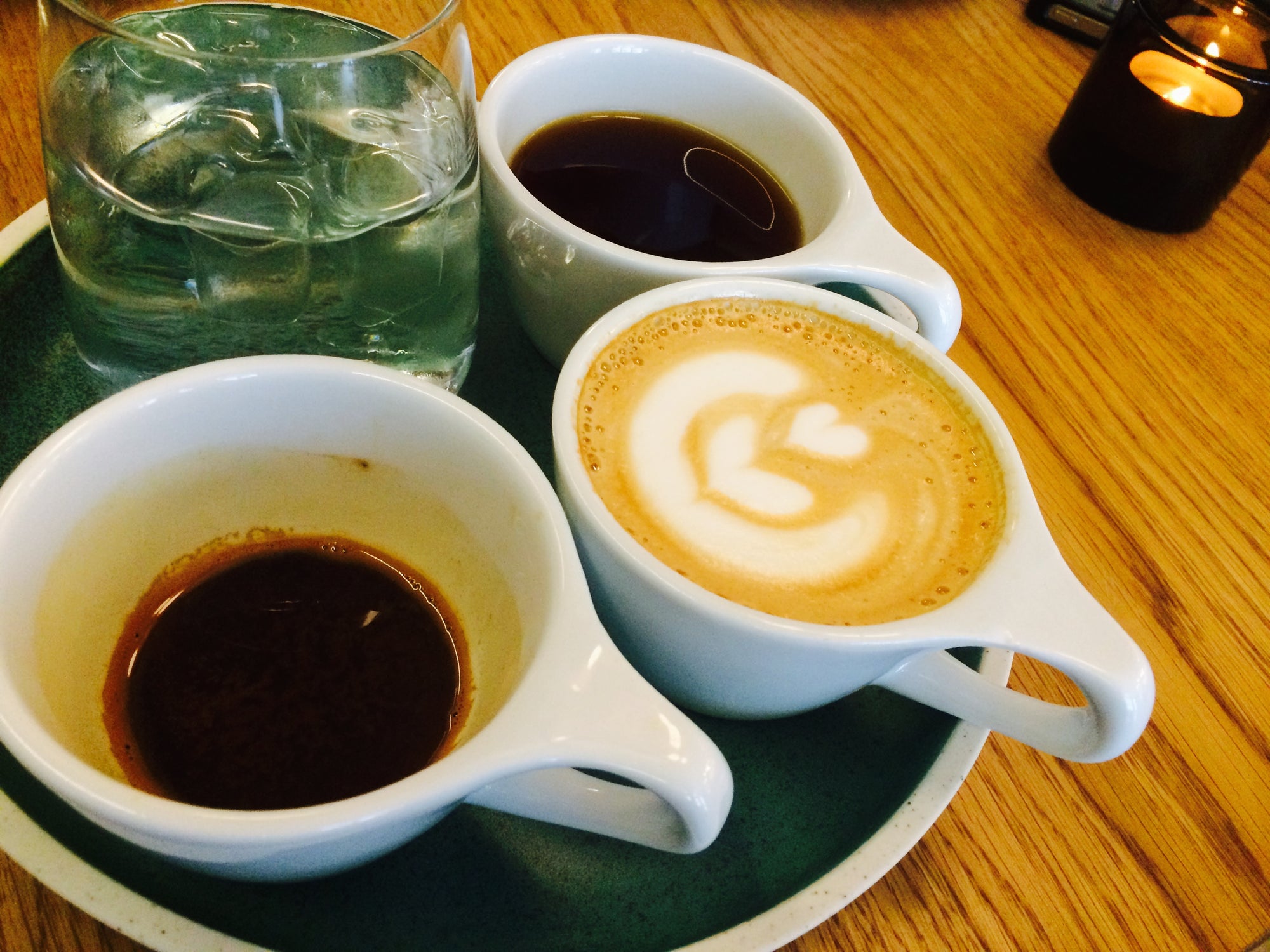In 2005, Coffea Circulor founder Ivica Cvetanovski observed the combination of coffee varieties at Kenyan coffee processing stations. This unification of coffee varieties that make up “mixed lots” at washing stations in Kenya removes the notion of “single estate” and “single variety”. Varieties such as SL28, SL34, Ruiru 11, K7, etc. were “blended” without any particular notion taken to ratio. This is mainly due to small scale farmers / smallholder pick their cherries as a cash crop, delivery to the closest drop off point. Coffee cherries are often personally carried to a local coffee processing station. At the station, cherries are weighted and the producer receive a voucher based on the weight. The voucher can later be redeemed for cash, Mpasa (electronic cash) or other monetary funds. This method of a post-cherry delivery payment is well established in Kenya and also incentivizes the small scale producer to unfortunately not always pay attention the cherries to carry a certain quality. Coffee cherries rather convey a more important heft because it simply is the weight that pays at the nearest processing station. Additionally, no particular notion is put on which varieties are picked and delivered: “the end product is coffee regardless”.
The notion of “single variety coffee” in Kenya has transformed to “Kenyan Heirloom”. Like its neighboring country Ethiopia, the term “heirloom” is a “collective” name for both identified and non-identified varieties. It is also a common practice to “mix” lots in Ethiopia, yet the “mix” occurs earlier in the chain of events - namely unconscious picking by the producers based on what coffee trees are present on their land. At times, some knowledge of specific plants on the producer own land is passed on by ancestors or in-depth botanic knowledge.
The Kenyan sorting mechanism of coffee as a grain is well established with its AA, AB, PB, etc. grades. However, there is no particular variety isolated approach or focus before reaching the sorting station and size-sorting. In addition, processing station workers are (mostly) instructed to quickly inspect cherries via visual cues, namely sort out possible greens and slight anomalies. Even if particular small scale producers harvest and bring a specific variety to stations, it is often “mixed” and not processed separately. This is also due to processing small scale or single lots are too small to be cared for. Another straight forward reason is that much more attention is needed for that particular lot to be processed separately. Attention means time and time is money. Namely, it has to be sorted, de-pulped, fermented in a dedicated water tank, dried in parchment on dedicated raised beds and milled separately. Each stage requires meticulous attention and responsibility, traceability and dedicated staff, individually. With the incentive to produce quantity before quality, this is where we are in 2021 and this is what has taken the center stage in our research and implementation.
Whilst there are some recordings of people in general noticing the sensory experience from Kenya “is not tasting as before”, the notion of “black currant” is absent, something that has carried the Kenyan signum, it is mainly as described the result and effect of underpaid coffee producers. With no incentive provided to produce high-quality coffee and focusing on quantity based on only picking cherries, cooperatively owned processing stations collect available coffee cherries and “mix them in one pot”. With no reference to ratios of the varieties being a key reason, there can be many more that go beyond our knowledge. Regardless, it is alarming and must be addressed from mainly two perspectives: quality coffee production requires attention and understanding from everybody - even end-consumers (both retail and wholesalers). Part of this is our developed Customer Expectancy Price (CEP) and True Development Cost (TDC).










